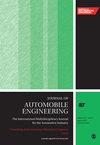基于激光雷达的道路可行驶区域分类和检测系统
IF 1.5
4区 工程技术
Q3 ENGINEERING, MECHANICAL
Proceedings of the Institution of Mechanical Engineers Part D-Journal of Automobile Engineering
Pub Date : 2024-04-17
DOI:10.1177/09544070241244414
引用次数: 0
摘要
在半结构化和非结构化道路上区分可驾驶区域和不可驾驶区域是自动驾驶汽车安全避开障碍物的一项重要任务。半结构化道路和非结构化道路的强度、法向量角度和曲率信息与背景不同,这就为设计和开发高效的可驾驶区域检测系统铺平了道路。本文根据实验车辆的重要指标,提出了一种检测可驾驶区域的有效方法。该方法首先计算特征的信息增益,以确定特征处理的顺序。在此基础上计算特征的最大类间方差,并结合实验车辆的具体指标实现对可驾驶区域的检测。最后,从平均精度、召回率和检测精度三个方面对该方法的性能进行了评估,并与现有的道路检测方法(包括 K-最近邻分类器和随机森林分类器方法)的性能进行了比较。实验结果表明,系统的平均精度、召回率和检测准确率分别为 96.19%、96.89% 和 96.72%。本文提出的方法能有效识别半结构化和非结构化道路上的可驾驶区域并对其进行分类。本文章由计算机程序翻译,如有差异,请以英文原文为准。
Lidar-based classification and detection system for drivable area on roads
Separating the drivable and non- drivable areas on semi-structured and unstructured roads is an important task for autonomous vehicles to safely and avoid obstacles. Semi structured and unstructured roads have different intensities, normal vector angles, and curvature information than the background, and this paves the way for the design and development of an efficient detection system for drivable areas on this roads. In this paper, an effective method for detecting drivable areas is proposed that is based on important indicators of an experimental vehicles. This method calculate the information gain of features is calculated firstly to determine the sequence of feature processing. On the basis of this sequence calculate the maximum inter-class variance of features, and combined with the specific indicators of the experimental vehicle to realize the detection of drivable areas. Finally, the performance of the method is evaluated in terms of average precision, recall, and detection accuracy, and compared with the performance of existing road detection methods, including the K-nearest-neighbors classifier and the random forest classifier methods. The experimental results show that the average precision, recall, and detection accuracy of the system are 96.19%, 96.89%, and 96.72%, respectively. The method proposed here can effectively identify and classify drivable areas on semi structured and unstructured roads.
求助全文
通过发布文献求助,成功后即可免费获取论文全文。
去求助
来源期刊

CiteScore
4.40
自引率
17.60%
发文量
263
审稿时长
3.5 months
期刊介绍:
The Journal of Automobile Engineering is an established, high quality multi-disciplinary journal which publishes the very best peer-reviewed science and engineering in the field.
 求助内容:
求助内容: 应助结果提醒方式:
应助结果提醒方式:


